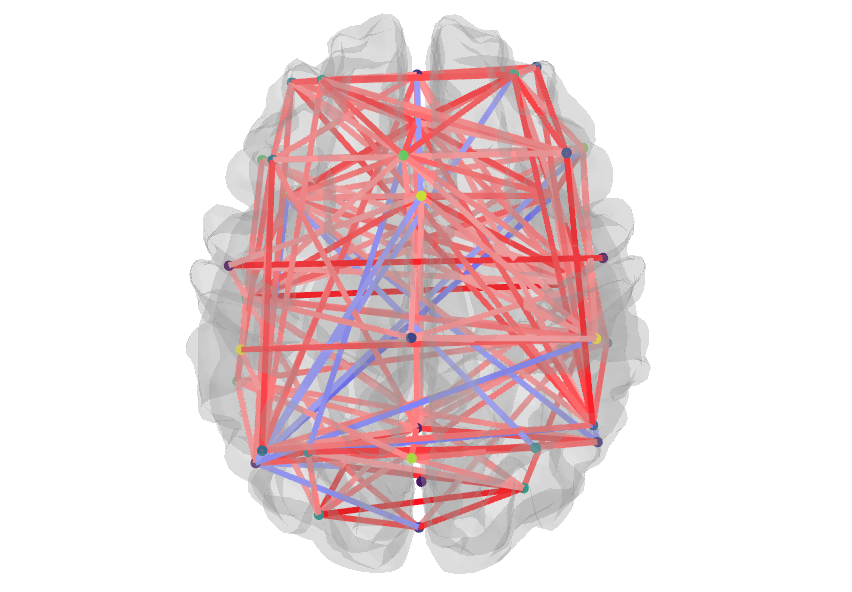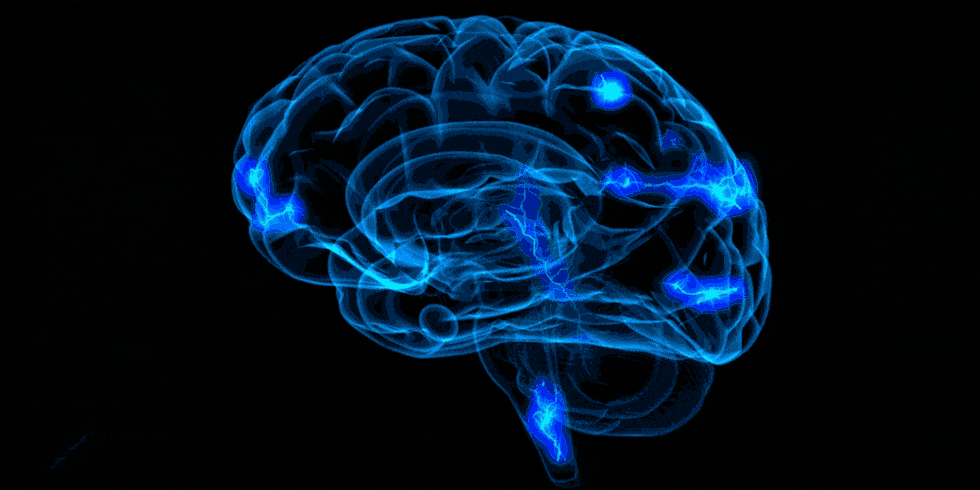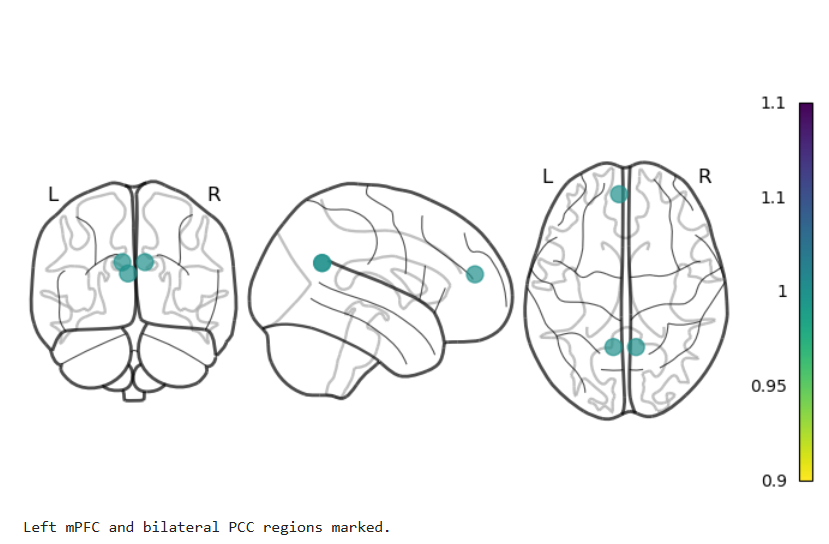
Brainbeats: Classifying Music Genre with fMRI Connectivity
By Chelsea Xuan Chen
Published on June 12, 2025
June 12, 2025

Project definition
Background
Music evokes rich and complex responses in the brain—and I wanted to explore whether functional connectivity patterns alone could reflect the genre of music being heard. Inspired by Nakai et al. (2021), who used voxelwise patterns across five participants to decode music genre, I chose to narrow the focus to a single-subject analysis.
Due to event file inconsistencies in sub-001 to sub-004, only sub-005 contained intact and correctly labeled annotations across all six runs. My project thus became a pilot proof-of-concept: could trial-wise ROI-to-ROI correlation matrices, extracted via the Schaefer 100-ROI atlas, support genre decoding even within just one brain?
Tools
This project used:
- Python & Jupyter Notebooks
nilearnfor ROI time series extraction and brain visualizationscikit-learnfor PCA and classification (SVM, KNN)matplotlib&seabornfor plotting and visual diagnostics
Data
Dataset: OpenNeuro ds003720
Nakai, T., Koide‑Majima, N., & Nishimoto, S. (2021). Brain and Behavior, 11(1), e01936.Used only
sub-005due to complete event labels (manual inspection revealed misalignments in other subjects)6 runs, each with ~40 musical trials; each trial is a 10-second clip; 10 total genres in the dataset
Brain parcellation: Schaefer 100-ROI cortical atlas (98 usable ROIs after resampling)
Final dataset: 98 usable trials, filtered to exclude clips <2 TRs or with correlation errors
Why only sub-005? The other subjects had corrupted or mismatched event files that broke alignment between music clips and fMRI data.
Deliverables
- Trial-wise ROI-to-ROI correlation matrices
- Atlas and correlation matrix visualizations
- PCA dimensionality reduction pipeline
- Genre classification with SVM and KNN
- Final presentation slide deck (≤15 minutes)
Results
Progress overview
- Extracted time-series from 98 ROIs using
NiftiLabelsMaskerinnilearn - Computed ROI-to-ROI Pearson correlations → 100×100 matrix → flattened to 4950D feature vector
- Applied PCA (n=20) for dimensionality reduction
- Trained classifiers (SVM, KNN) for multiclass and binary decoding
Tools I learned during this project
nilearnatlas-based ROI extraction- Correlation matrix construction + vectorization
- PCA feature compression
- Classification using
SVC,KNeighborsClassifier, and cross-validation - Confusion matrix and performance visualization
Deliverable 1: Multiclass genre classification
- SVM + PCA yielded ~13% accuracy (above 10% random baseline for 10 genres)
- Confusion matrix showed some genre-specific signal, particularly for Reggae (not shown in final binary model)
Deliverable 2: Binary genre decoding (Pop vs. Metal)
- SVM + PCA achieved ~68% accuracy (above chance), though KNN was too unstable to evaluate
- Performance varied across runs, likely due to short duration and low trial count
Deliverable 3: Visualizations
- Schaefer 100-ROI brain parcellation plotted to validate resampling and mask quality
- Average correlation matrix showed strong within-region signals (clean diagonals)
Schaefer Atlas
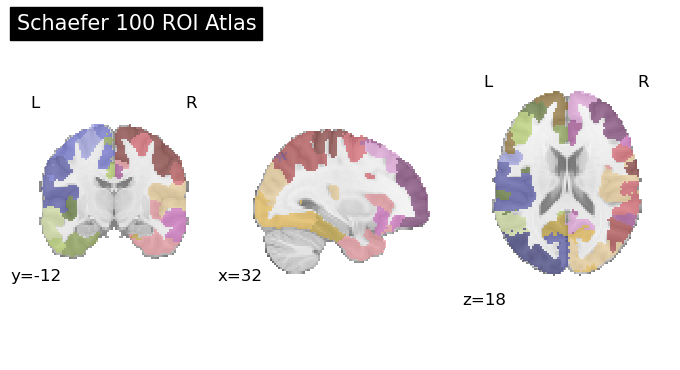
ROI Correlation Matrix
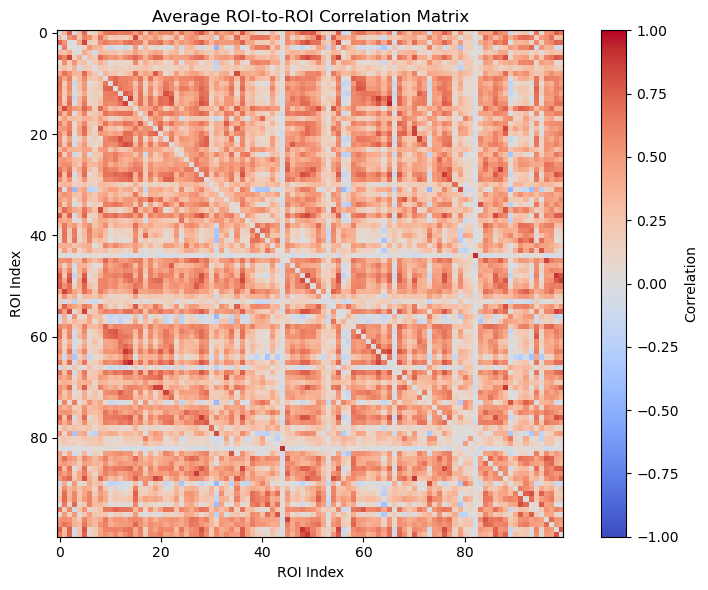
PCA Confmax
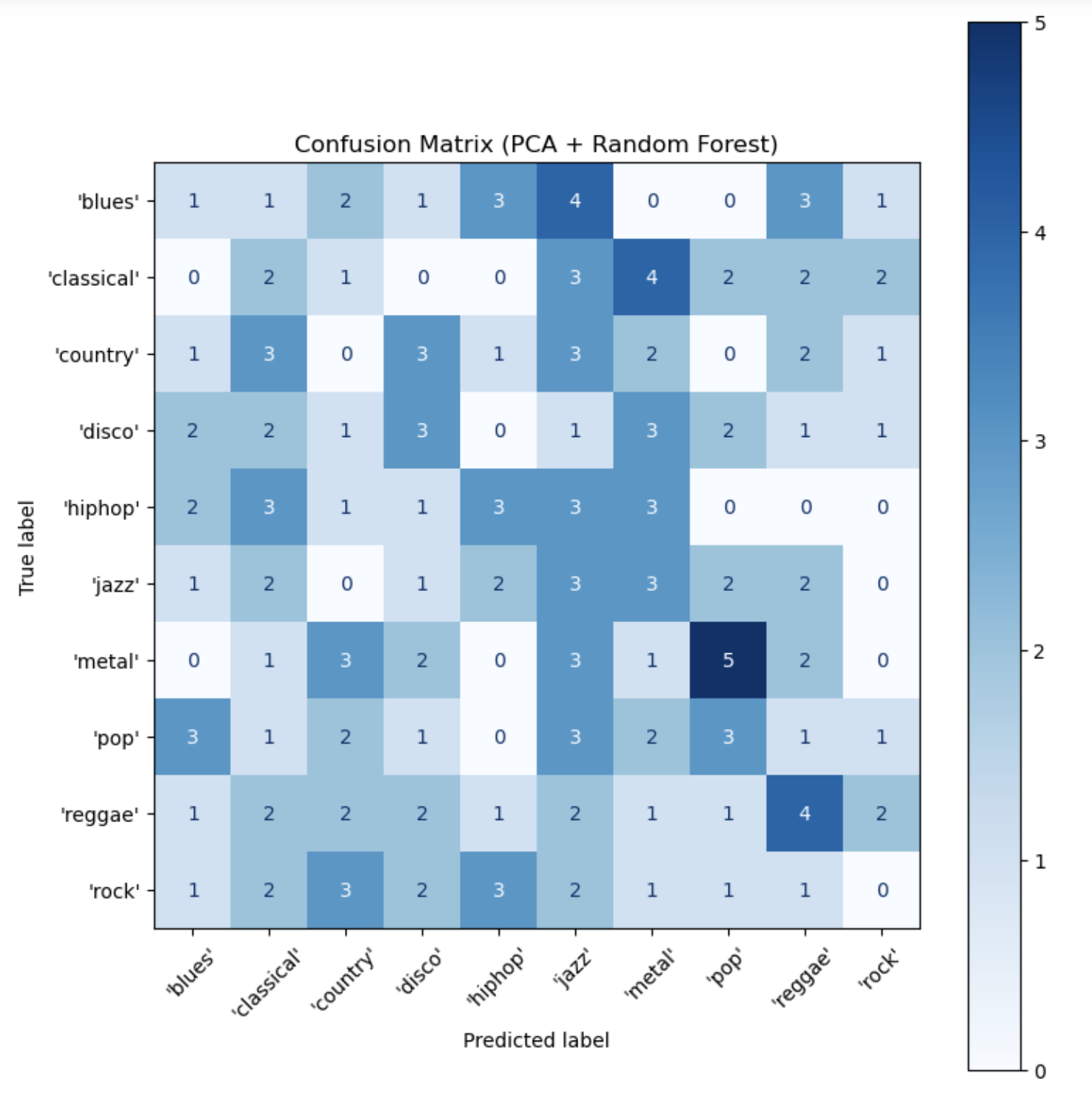
Reflection
This pilot study suggests that even within a single brain, genre-relevant information can be gleaned from ROI connectivity patterns. But limitations remain:
- Generalizability limited by sample size (n=1)
- Low trial count vs. high feature dimension = overfitting risk
- Classifier performance unstable across reruns
Future directions
- Use more participants (once metadata is cleaned!)
- Try higher-resolution atlases (e.g., Schaefer 200-ROI)
- Experiment with sliding window connectivity or graph-based features
- Combine with music theory-based audio features (e.g., tempo, tonality) for hybrid modeling
- Explore feature importance: which ROI-pairs drive classification?
